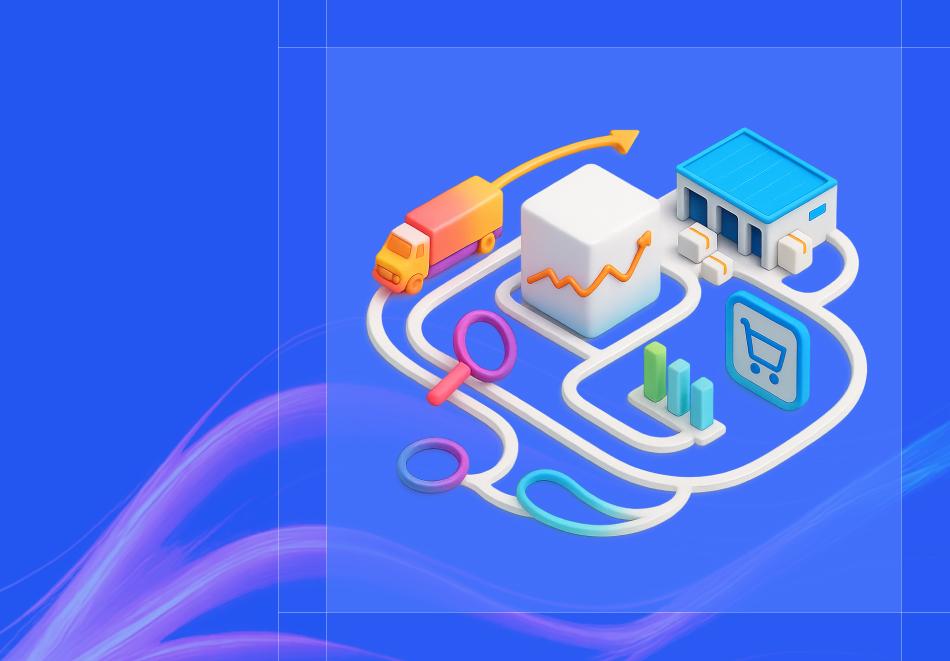A CXO Playbook to Minimize Risk, Maximize Visibility, and Act Before the Next Disruption Hits
Global supply chains are still under pressure halfway through 2025 and few expect stability anytime soon. According to PwC, 91% of supply chain leaders are rethinking their strategies in response to geopolitical volatility. McKinsey emphasizes that resilience, agility, and sustainability are now core imperatives—not just competitive advantages. This shift reflects a deeper operational priority: to build supply chains that withstand disruption while protecting profitability and long-term trust.
From shifting trade policies and tariffs to renewed disruptions in the Red Sea, volatility continues to reshape the landscape. The pressure is constant, even if the source keeps changing. Supply chain resilience, once considered a strategic edge, is now a baseline expectation for protecting profitability and earning long-term trust.
Organizations that once prioritized efficiency above all else are now re-engineering for adaptability and risk tolerance—especially in light of recent geopolitical shifts, like renewed Red Sea disruptions and evolving trade tensions. In this update, we outline actionable steps to assess and strengthen your supply chain so it’s equipped to respond to today’s volatility—and whatever comes next.
Quick Takeaways: How to Build a Resilient Supply Chain
- Resilience means absorbing disruption without losing momentum
- Use real-time data for visibility and faster decisions
- Diversify suppliers to avoid regional overexposure
- Automate workflows to reduce manual risk
- Model disruptions before they happen
What Is Supply Chain Resilience and Why Does It Matter in 2025?
Before you can build resilience, you need to understand where the cracks are. Most global supply chains operate under stress—whether it’s shifting trade rules, sudden port closures, supplier disruptions, or demand spikes. These aren’t rare events—they’re standard operating conditions now.
Modern supply chains are built to absorb volatility—without losing momentum.
According to PwC, only 34% of operations leaders currently prioritize resilience in their technology investments, even though 86% recognize the need for better risk visibility. This disconnect highlights a deeper challenge: resilience isn’t just about physical workflows—it demands evaluating digital maturity, data visibility, and supplier reach. McKinsey notes that most companies lack insight into tier-2 and tier-3 suppliers, leaving them exposed to hidden risks.
That’s why building true resilience means going beyond recovery. It requires systems that can:
- Detect disruptions early
- Respond quickly, with greater precision
- Maintain continuity without compromise
And it all starts with a modern audit—one that looks beyond the surface and embeds resilience across your systems, processes, and teams.
Leading organizations are making that shift through:
- Real-time visibility across inventory, suppliers, and logistics networks
- Predictive modeling and scenario planning that test responses before disruption hits
- Cross-functional agility, with teams trained to adapt and respond dynamically
- Integrated digital platforms that unify sourcing, operations, finance, and compliance
The payoff is measurable: faster recovery, stronger compliance posture, and a more reliable experience for customers and partners—even under pressure.
As we move toward 2026, resilience isn’t a contingency plan—it’s a core capability. The organizations that invest in it now will lead the way in stability, trust, and long-term performance.
Step 1: How to Assess the Health of Your Supply Chain for Resilience
Before you can build resilience, you need a clear view of where the cracks are. That starts with a structured, end-to-end audit of your supply chain’s readiness, efficiency, and exposure.
This isn’t just about documenting what exists—it’s about diagnosing the things that need to improve.
There are key areas that need to be evaluated:
1. Risk Management Readiness
- Disruption Coverage: Do you have active plans for supplier failures, cyberattacks, or sudden trade barriers?
- Scenario Planning: Have you modeled worst-case events like port shutdowns or critical raw material shortages?
- Response Speed: How quickly can your teams mobilize and act under pressure?
2. Global Disruption Awareness
- How geographically concentrated are your suppliers and logistics routes?
- Are you over-reliant on a single region, port, or partner—particularly in high-risk areas like Asia, Eastern Europe, or the Middle East?
3. Operational Efficiency
- Are your procurement, warehousing, and logistics workflows digitized, streamlined, and integrated?
- Where are legacy systems still creating bottlenecks or delaying insight?
Disruption Coverage: Do you have active plans for supplier failures, cyberattacks, or sudden trade barriers?
4. Resource Capacity
- Do you have the bench strength—inventory buffers, skilled staff, and alternate vendors—to flex in real time?
- Can you scale output or shift sourcing quickly if conditions change?
A modern audit lays the groundwork for actionable change—and serves as the foundation for long-term resilience.
Step 2: Identifying Hidden Weaknesses in Your Supply Chain
The first step to improving resilience is identifying where your supply chain is most vulnerable. That means looking for rigid processes, visibility gaps, or overdependence on specific regions or vendors. These weak points often hide in plain sight. A focused assessment helps uncover the cracks—so you know exactly where to act before the next disruption strikes.
TLeading consulting firms agree that resilience is no longer a contingency plan: it’s a core business capability. According to KPMG, strategic shoring and nearshoring are gaining momentum, with 69% of U.S.-serving supply chains expected to be Americas-based by 2026.
Assess the Full Value Chain—and Invest in Visibility
To build resilience, you need to go beyond surface-level metrics. Start by evaluating:
- Supplier relationships and geographic exposure
- Production lead times and inventory turnover
- Forecasting accuracy across demand and supply
- Delivery reliability and last-mile agility
- Customer service responsiveness under pressure
Leading reports from Deloitte, EY, and BNY highlight two major priorities:
- Dual/multi-sourcing and regionalization to reduce geopolitical exposure
- AI and advanced analytics for end-to-end visibility and forecast precision
McKinsey and KPMG note that over 50% of supply chain leaders already use AI for forecasting—yet visibility remains the top challenge. To close that gap, organizations are:
- Expanding supplier diversification strategies
- Enhancing demand planning with AI-powered tools
- Investing in advanced analytics and next-gen ERP platforms
- Reinforcing SLAs with 3PLs to improve last-mile performance
Resilience starts with visibility—and visibility depends on the right tools and strategy.
Step 3: What Are the Best Strategies to Make Your Supply Chain More Resilient?
A resilient supply chain isn’t rigid—it’s responsive. It adapts to market shifts, regulatory pressure, and geopolitical change. That means building flexibility directly into your infrastructure, operations, and vendor network.
So what are the top investments companies are making to future-proof their supply chains?
- Diversify suppliers and sourcing regions
- Invest in real-time supply chain visibility
- Model disruptions with contingency planning
- Automate key operational processes
- Strengthen cybersecurity and physical risk protocols
Step 4: How Do Resilient Supply Chains Stay Adaptable Over Time?
Building resilience is not a one-time project; it’s a continuous discipline. Regardless of shifting markets, new threats emerging, and evolving customer expectations, your supply chain strategy should be ready to match. The most resilient organizations are those that embed adaptability into their operating model, not just their technology stack. This means aligning governance, data, and decision-making across the enterprise—not just within the supply chain to function.
Your chosen ERP and SCM platforms should at minimum offer:
- Real-time KPI dashboards with automated alerts that track both internal and external signals
- Embedded analytics that combine operational data with external risk indicators
- Cross-functional alignment through shared, role-based visibility across departments
In regulated industries, the goal isn’t just visibility—it’s “always-on” monitoring that enables proactive, not reactive, action. This is what allows organizations to move from after-the-fact quality corrections to true proactive CAPA (Corrective and Preventive Action).
Action Steps To Establish a Resilient Operation System
- Conduct quarterly strategy reviews to reassess risk exposure and reprioritize investments.
- Use scenario planning to test readiness for emerging threats.
- Align resilience KPIs with broader business goals so supply chain health becomes a board-level conversation.
- Track critical signals consistently to detect and act on disruption earlier. This includes:
- Fluctuations in raw material and logistics costs
- Delivery performance and customer satisfaction metrics
- Supplier risk scores, compliance flags, and lead time variability
- Evolving ESG and regulatory mandates that affect sourcing or distribution
Why Supply Chain Resilience Is Your Competitive Edge in a Volatile Economy
In an era defined by uncertainty, supply chain resilience is your competitive edge. Resilient supply chains aren’t just surviving disruption—they’re turning it into momentum.
When conflicts reroute shipping lanes, tariffs spike overnight, or a key supplier goes dark, resilient supply chains pivot with minimal friction.
As McKinsey & Co. rightly puts it, resilient supply chains are predictive, not reactive. PwC emphasizes that resilience must be embedded into transformation—not treated as a crisis response. Deloitte, EY, and KPMG all agree: the future belongs to organizations that treat resilience as a core capability, not a contingency plan.
Your Next Move
- Assess where you are: Conduct a digital and operational audit to uncover gaps.
- Envision where you want to be: Align resilience goals with business strategy.
- Get in Touch: Invest in the tools, partnerships, and governance models that will carry you forward.
Let’s map your supply chain’s resilience together—before the next disruption hits.







